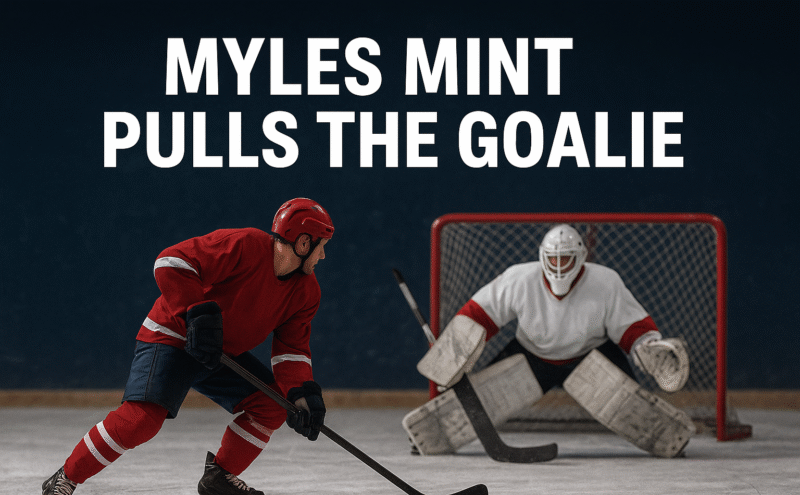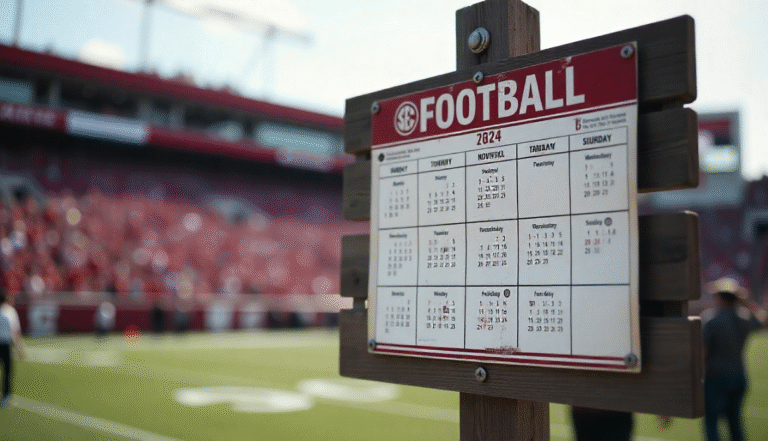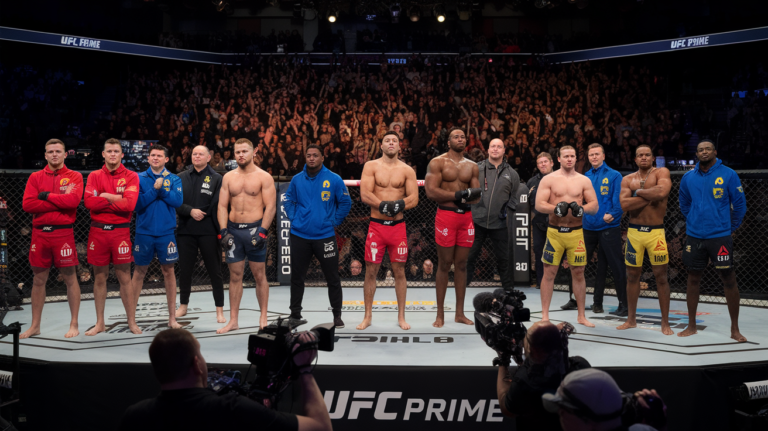
Introduction
When you hear “Myles Mint pulls the goalie,” it’s not just about hockey. It’s a phrase that’s capturing attention for its daring mix of strategy and risk. In this article, you’ll uncover what this move means on the ice, how it became symbolic beyond sports, and what lessons its boldness can teach us in life and leadership.
Let’s break it down together — from the mechanics to the mindset.
What Does “Pulling the Goalie” Mean in Hockey?
The Basic Definition
In hockey, pulling the goalie means removing the goaltender from the ice to add an extra skater (making it a 6-on-5 situation). The goal: increase offensive pressure, especially when trailing near the end of the game. Of course, the tradeoff is that the net is empty — any turnover can lead to a goal against.
Why Teams Do This
- When trailing late in the game — to try to tie it
- To create numerical advantage in offense
- As a last-ditch effort when time is running out
Because it’s high risk, coaches often wait until the final minute or two. But this is exactly where Myles Mint’s version stands out.
Who Is Myles Mint — And Why His “Pull” Stands Out
Introducing Myles Mint
“Myles Mint” may not be a household name in all hockey circles (depending on your league), but the phrase “Myles Mint pulls the goalie” links to a kind of mythical or narrative version of a player/coach who is bold, unafraid to make big moves under pressure.
Some articles frame it as a symbolic or viral phrase rather than a documented single event. For example, one write-up says:
“The phrase ‘Myles Mint pulls the goalie’ has gained attention … It connects the traditional hockey strategy … with symbolic or metaphorical meaning.” (technovahub.co.uk)
Thus, “Myles Mint” becomes a stand-in for someone who takes extreme but calculated risk when the stakes are highest.
The Move That Shook the Concept
In stories around it, the moment occurs when a game is close, minutes left, and someone (Myles Mint) decides not to wait, but to act earlier — pull the goalie sooner — betting on momentum, aggression, or sheer will. This makes the phrase resonate more than just “coach pulls the goalie.”
Strategy & Timing: When to Pull the Goalie
Traditional Timing vs. Modern Analytics
Traditionally, coaches wait until the final 1–2 minutes. It’s seen as a desperate move. But as data and analytics seep into sports, that paradigm is shifting.
Some models now show earlier pulls (e.g. 2–3+ minutes) might yield higher chances of tying, depending on possession, opponent fatigue, and pressure.
Key Factors to Consider
When deciding, coaches (or “Myles Mint”) often weigh:
- Puck possession — if your team is controlling play, you can risk earlier.
- Opponent defense — how well they handle pressure or turnovers.
- Time left & score gap — down by one? Maybe earlier. Down by more? The risk may be too steep.
- Player fatigue & line freshness — tired defenders may crack under pressure.
- Game momentum — a surge of energy may justify an early gamble.
In stories of “Myles Mint,” the decision tends to reflect bold timing — choosing earlier pulls when others hold back.
Risks, Rewards & Psychological Impact
The Rewards of Pulling the Goalie
- Increased offensive chances — more bodies, more shooting lanes.
- Momentum swing — the crowd, energy shifts, pressure on the opponent’s defense.
- Psychological edge — shows belief and courage.
Some narratives credit “Myles Mint” with energizing his team and giving players the message: “We still have a shot.
The Risks
- Empty-net goals — a bad turnover often leads to a conceded score.
- Morale hit — repeated failure may erode confidence.
- Criticism & second-guessing — if it fails, people will wonder if it was necessary.
The phrase carries weight because it’s about choosing to accept those risks in pursuit of something bigger.
Mental Pressure on Players
When the goalie is off, defenders and forwards alike feel it. Every pass and decision becomes higher stakes. In stories of the “Myles Mint” move, players reported sharper focus, elevated urgency, and tension that turned into momentum.
Examples & Cases (Real & Mythic)
To give flesh to the phrase, many articles treat “Myles Mint pulls the goalie” as a symbolic lens. For example:
- One write-up describes the move as “more than a sports phrase”, connecting it to leadership and daring decisions.
- Another calls it a “daring move that challenges traditional tactics and embraces high-stakes decision-making.”
While it may not refer to a single documented event, this phrase captures collective themes: risk, timing, leadership.
In hockey history, legendary pulls include coaches like Patrick Roy who tried early goalie removals, influencing how teams think about timing and pressure. “Myles Mint pulls the goalie” seems to channel that spirit.
Metaphorical & Broader Lessons
Life, Business & Leadership Applications
Because the phrase is catchy and powerful, people use “Myles Mint pulls the goalie” outside sports:
- In business: making big bets before the safe moment, launching projects when others wait.
- In personal life: choosing to forego security for the possibility of breakthrough.
- In leadership: signaling faith in your team, showing courage under pressure.
This broad usage gives the phrase depth beyond hockey.
H2: Timing, Risk & Trust in Decision-Making
If you look closely, the phrase underscores three pillars:
- Timing is everything: Wait too long, and the chance is lost. Act too early, and risk explodes.
- Risk vs reward: Bold moves carry risk, but safe plays may guarantee defeat.
- Trust in the team: To pull the goalie, you must believe your players can execute under strain.
In narratives around “Myles Mint,” those themes are central.
Step-by-Step: How “Myles Mint” Might Plan a Pull
Here’s a hypothetical playbook, based on the stories and strategy patterns:
- Monitor momentum & possession — if your team is dominating, consider earlier.
- Assess time & score margin — often down by one, late 3–5 minutes give room.
- Check fatigue & matchups — fresh forwards vs tired defenders help.
- Signal readiness — communicate cues so players are prepared.
- Pull the goalie — execute quickly, maintain offensive pressure.
- Defensive awareness — shift roles so defenders cover the open net responsibly.
- React & adjust — if you gain control, continue pressing; if you lose it, manage risks.
This mirrors the kind of calculated bravado that “Myles Mint pulls the goalie” emphasizes.
Criticism, Debate & Limits
H2: When It’s Seen as Reckless
Some critics argue that pulling the goalie is too often a desperate move. If done poorly or often, it can look amateurish rather than strategic.
H2: Does It Work Outside Elite Leagues?
In amateur or youth hockey, the risks are higher because players are less practiced in 6-on-5 plays. The phrase’s mythic status can overshadow practical limits.
H2: Overuse & Loss of Impact
If the “pull” becomes cliché, it loses meaning. In stories of “Myles Mint,” the pull is powerful because it’s rare, bold, and decisive — not routine.
Why the Phrase Resonates Today
- Cultural catchiness – “Myles Mint pulls the goalie” is short, vivid, easy to repeat.
- Emotional tension – any time someone pulls a goalie, the drama is high.
- Universal metaphor – people see their own moments of risk in it.
- Narrative power – associating a name makes it feel personal and memorable.
Because of that, it spreads: sports writers, social media, fans, analysts — all lean into it when a bold decision is made.
Suggested Visuals & Multimedia
To help readers grasp and feel the moment:
- Hero image: A hockey rink in the last minute, goalie skates off, crowd in tension.
- Infographic: “Risk vs reward” chart of pulling goalie early vs late.
- Timeline visual: Key moments in hockey history when goalie pulls paid off (or didn’t).
- Video highlight: A clip of a real game where a goalie was pulled, with analysis of timing and outcome.
- Quote callout: “Pulling the goalie signals: ‘I believe in us’.”
Wrap-Up & Takeaways
“Myles Mint pulls the goalie” is more than a clever phrase. It captures a moment when a player or coach opts for bold action, trusting timing, courage, and execution over safety. On the ice, it’s about scoring opportunity. In life, it’s about recognizing when the moment demands risk.
Key lessons:
- Timing and momentum can make or break risky moves.
- Trust in yourself and your team is essential.
- Boldness doesn’t guarantee victory—but refusing to act usually guarantees regret.
If you ever find yourself in a moment where “playing safe” feels like defeat, remember: sometimes you’ve got to pull the goalie.


